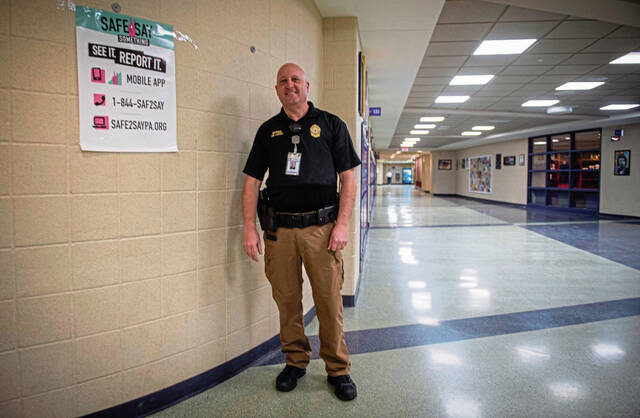Editorial: Safe2Say Something is a valuable tool, but false reports can't be dismissed
In February, Millvale police arrested a 16-year-old Shaler Area High School student who was accused of having a semiautomatic weapon on a bus.
The school resource officer was notified Jan. 30. The student was identified the next day. The student was then removed from school and the case turned over to authorities.
Shaler Area did not become another dot on the map of school shootings.
One of the several mechanisms that brought this case to light was Safe2Say Something, the reporting system administered by the Pennsylvania Attorney General’s office.
The system offers multiple ways to anonymously report anything in schools that could be a concern. That might be suicide or mental health crises. It might be dating abuse. It might be bullying or hazing. It doesn’t have to be fears of a Columbine-type eruption of violence, but it could be.
But in the aftermath of a school shooting, the competing responses often are “do something about guns” and “do something about mental health.” A system like Safe2Say arguably attempts both. Since its start in 2019, the program has led to the interception of at least 123 weapons.
“We know that this program has saved students’ lives,” said AG spokesman Brett Hambright.
The benefits are undeniable and laudable. But does that make problems easier to dismiss?
Hambright says about 4% of statewide tips in the 2023-24 school year were false. That was more than 1,300. For perspective, that’s about half the total received from schools in the Allegheny and Pittsburgh-Mt. Oliver intermediate units, which top the state for reports at about 2,500. Of those, about 750 were pranks. That’s frustrating.
What’s worse is the 600 that are “deliberate abuse of system.” What garners attention are those that report something big and disruptive.
In 2020, there was a report at Kiski Area that put the high school into lockdown and swarmed it with police and bomb-sniffing dogs. It was ultimately found not credible. A similar incident in 2022 at Coatesville Area High School in Chester County resulted in a student being charged with making terroristic threats, threats to use weapons of mass destruction and criminal use of a communication facility.
Harder to track are incidents in which the system is used to target individuals. For example, Bucks County prosecuted a 14-year-old student in 2021 for using the confidential, anonymous system to file false reports against three individuals, claiming they were going to harm themselves or others.
“If it saves one life, it’s worth it,” said Chad Roland, Kiski Area’s assistant to the superintendent for K-12 education and safety.
Roland isn’t wrong. However, it is important to recognize that a malicious report can be its own life-threatening event. The largest category of Safe2Say tips (about 6,400) report bullying or cyber bullying. A targeted, malicious report might be an example of bullying behavior.
Safe2Say is an important tool in addressing the overlapping, frequently knotted problems of behavior, mental health, bullying, violence and more. It is a way for students to take the information they have that could help a single person or the whole school community and put it in the hands of those who can best address it.
But it is just as important to recognize the holes in its armor to protect schools and individuals from false reports.
Remove the ads from your TribLIVE reading experience but still support the journalists who create the content with TribLIVE Ad-Free.

